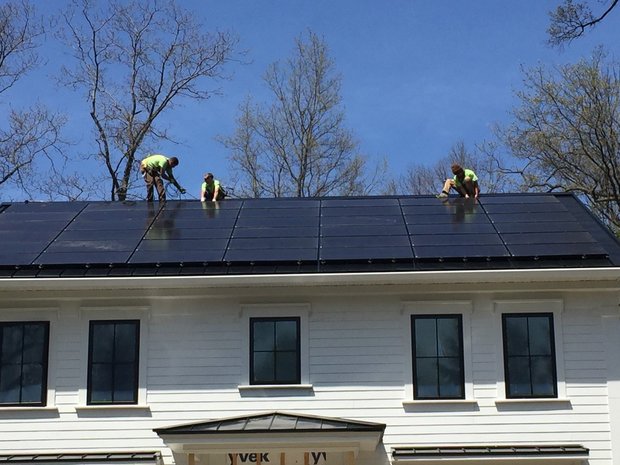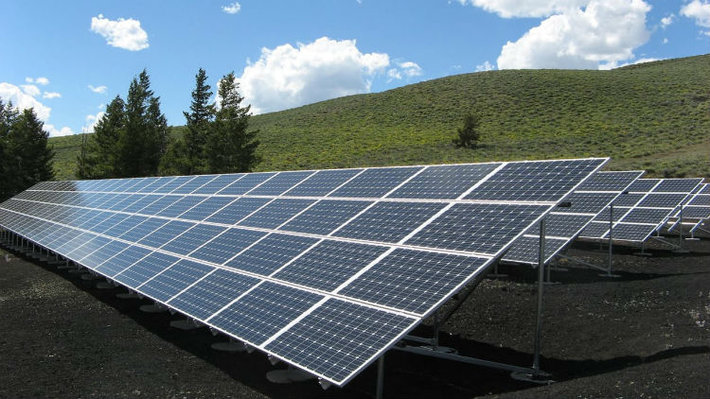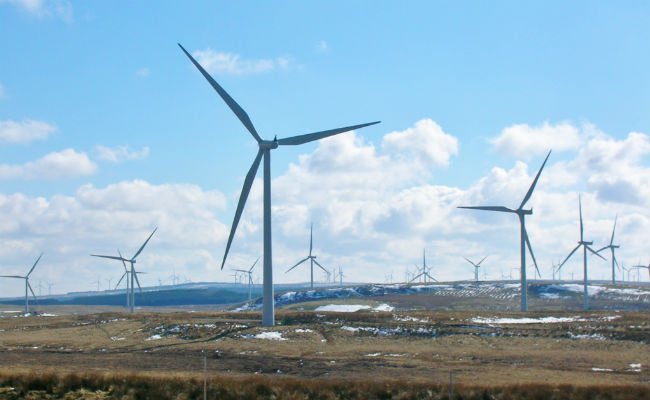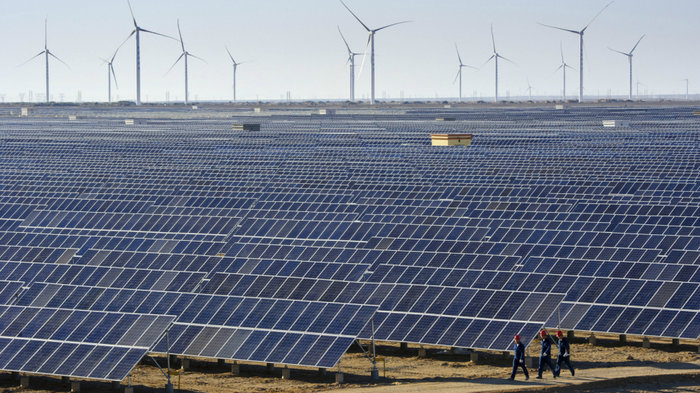Researchers developed a new way to extract uranium from seawater, bringing us closer to nuclear power that can sustain us for 10,000 years. Uranium makes up a teeny percentage of the particles in the ocean, about 3 parts per billion or roughly the equivalent of a grain of salt dissolved in a liter of water but the thing about the ocean is there’s a whole lot of it. Uranium exists in water bonded to two oxygen atoms in a molecule called uranyl. To capture the uranyl, long strands of plastic coated in a chemical with a negative charge called amidoxime were left underwater for a month, where they would passively soak up that uranium goodness
Continue reading... →Wind turbines across the Great Plains states produced, for the first time, more than half the region’s electricity last Sunday. The power grid that supplies a corridor stretching from Montana to the Texas Panhandle was getting 52.1 percent of its power from wind at 4:30 a.m. last Sunday, Little Rock, Arkansas-based Southwest Power Pool Inc. said in a statement last Monday. As more and more turbines are installed across the country, Southwest Power has become the first North American grid operator to get a majority of its supply from wind.
Continue reading... →While Ohio’s legislature has tried to further weaken the state’s renewable energy standards, lawmakers from two other states – Maryland and Michigan – have beefed up their state’s standards. Maryland is the latest state to do so. Its general assembly passed a law last year that required 22 percent of the electricity sold in the state to be produced by renewable sources by 2020. The old standard had been 20 percent by 2022. In December, Michigan, voted to increase its renewable energy standard to 15 percent from 10 percent by 2021. The legislation also set a voluntary goal of satisfying 35 percent of the state’s electricity demand through a combination of renewable sources, energy efficiency and demand reduction.
Continue reading... →Despite our increasing usage of renewable energy, there are still some big hurdles to achieving sustainability. The most recent challenge, which underlines the need for increased investment in renewables, comes in the form of storing renewable energy for later use. Most of us became familiar with the concept of cryogenic storage in the Sci-Fi movies and comic books we enjoyed as kids. While this actually deals with the preservation of usable electricity instead of human bodies, the idea is very much the same. Thanks to some recent breakthroughs, scientists have found that we can freeze energy via liquid nitrogen or liquid air. A process that works by collecting the heat dissipation that occurs by exposing incoming electricity to extremely low temperatures, cryogenic energy storage is an attractive option on account of its relatively low cost and its smaller physical storage requirements.
Continue reading... →In a big win for renewable energy, the cost of solar and wind power has plummeted in recent years, making it the same price as traditional fossil fuels in about 30 countries, according to a new report from the World Economic Forum (WEF). The cost of solar energy has dropped 80% since 2009, and wind energy has dropped by 30% in the last three years. This shift means more countries have reached “grid parity” — where the cost of fossil fuels and renewable energy are the same.
Continue reading... →China has announced that it will invest $361 billion in renewable energy through the end of the decade — another signal that the world’s most populous nation is serious about combating climate change. The investment, Reuters reports, will continue China’s shift away from coal and other dirty fuels. In addition to fighting climate change, investing in clean energy should help China address its air-pollution problems. Major cities like Beijing are often blanketed in smog, due largely to coal burning and other industrial activity.
Continue reading... →Communications strategist and linguist George Lakoff has often warned that the Left communicates through policies and the presentation of factual data while the Right deals in moral themes and a focus on values. Lakoff has suggested that campaigns must appeal to a moral vision, and one that understands the needs and longings that are common to all of us. As for policies, he would focus on themes and legislation that can simultaneously address many of these common needs and longings. He calls such campaigns “strategic initiatives” and, a decade ago, pointed to one — the Apollo Project, a major investment in alternative energy that would simultaneously have created jobs and challenged climate change. A new suggested initiative for progressives is a “Make America Beautiful Again” campaign which is first a jobs program.
Continue reading... →With or without Donald Trump‘s help, the North Carolina municipality of Boone is calling on the whole state – and the United States at large – to encourage green jobs and transition to 100 percent clean energy across all energy sectors. The resolution was approved by a 5-0 vote by Boone Town Council on Thursday. This makes Boone the first town in the country to officially demand that the U.S. completely ditch fossil fuels to “avoid climate catastrophe.” The country’s total transition to clean energy is not as far-fetched as it seems. Boone’s resolution was inspired in part by the research of renewable energy expert Dr. Mark Z. Jacobson, a Stanford University professor and cofounder of The Solutions Project, a state-by-state roadmap to convert the country to 100 percent renewable energy by 2050.
Continue reading... →It’s getting easier to bike to work in Chicago. The city added 100 miles of new bike lanes over the last five years, and, by 2019, plans to add another 50 miles of “better” bike lanes, including lanes with curbs to protect riders from cars. Now the city is beginning to consider going further, with a series of floating, solar-powered bike paths along the edge of the Chicago River. Architecture firm, SecondShore, hopes to run a pilot project, perhaps by the summer of 2017, in Chicago’s 33rd Ward, giving riders a chance to experience a half mile of a basic iteration of the path, and giving the designers feedback on the system.
Continue reading... →Flooring can be made from any number of sustainable materials, making it, generally, an eco-friendly feature in homes and businesses alike. Now, however, flooring could be even more “green,” thanks to an inexpensive, simple method developed by University of Wisconsin–Madison materials engineers that allows them to convert footsteps into usable electricity. Wood pulp, which is already a common component of flooring, is partly made of cellulose nanofibers. They’re tiny fibers that, when chemically treated, produce an electrical charge when they come into contact with untreated nanofibers.
Continue reading... →








